From November 18th to 23rd, 2024, members of the TRILMAX consortium from the ELTE node visited Lancaster University to enhance our understanding of spin torque in 2D systems. The visit was led by László Oroszlány (Principal Investigator), József Cserti (Advisory Board Member), and included research fellows Tamás Véber and Zoltán Tajkov. The purpose of the visit was to delve deeper into the intricacies of calculating spin torque, particularly within the framework of 2D materials, and to further the collaboration with Prof. Colin Lambert’s research group at Lancaster.
Day 1 – November 19, 2024
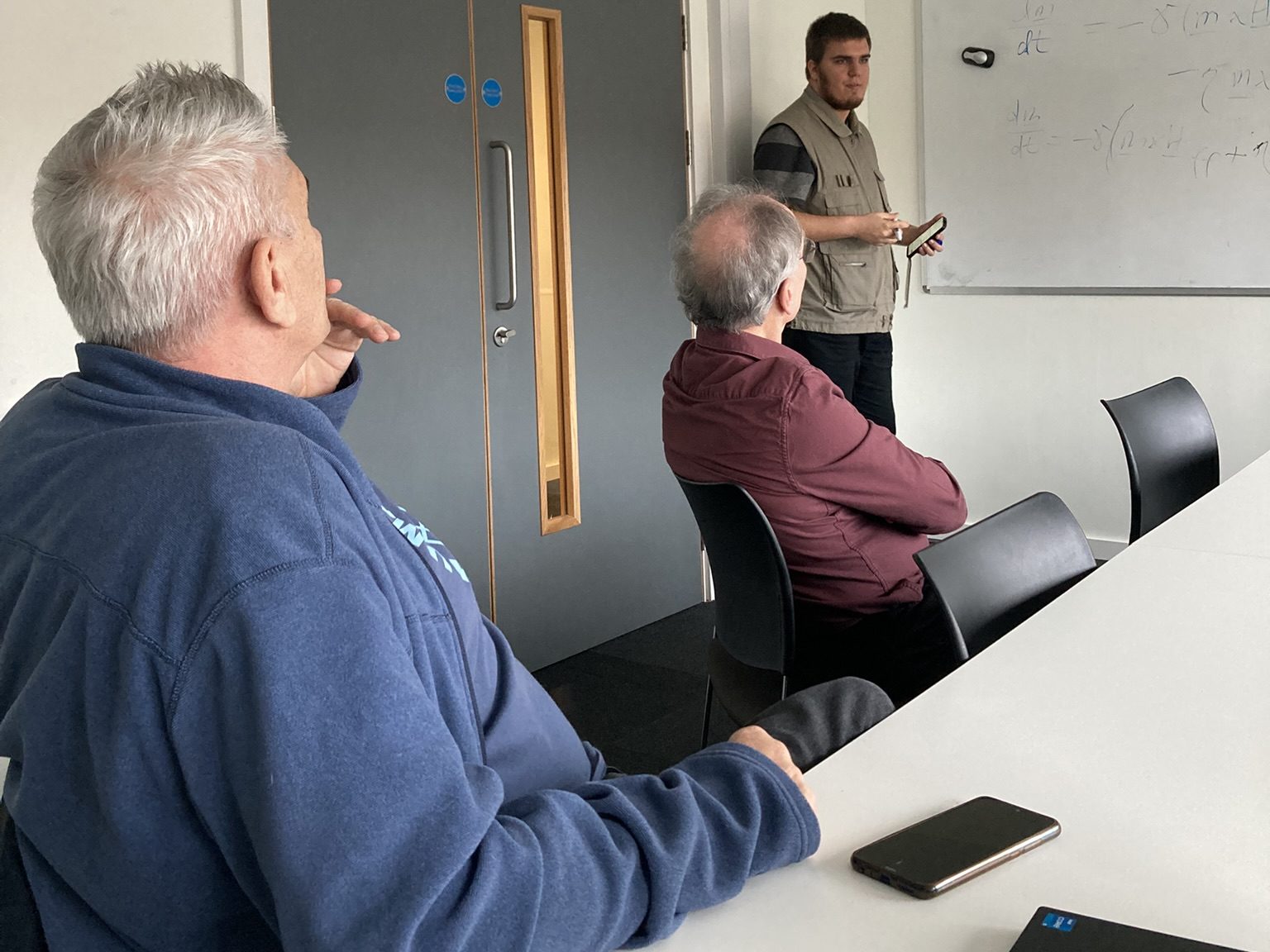
The visit commenced with a presentation by Tamás Véber, who discussed recent advancements and challenges in the spin torque effect within a 1D setup, employing standard scattering problem-solving techniques. During the presentation, Prof. Colin Lambert provided insightful feedback, suggesting a shift in approach by considering the problem on a grid. He recommended using tight-binding methods to better capture the behavior of the system. This advice sparked a productive discussion about how to integrate grid-based approaches into our existing models. The day ended with the team brainstorming ways to refine their computational strategies, guided by Prof. Lambert’s and Prof. József Cserti’s expertise.
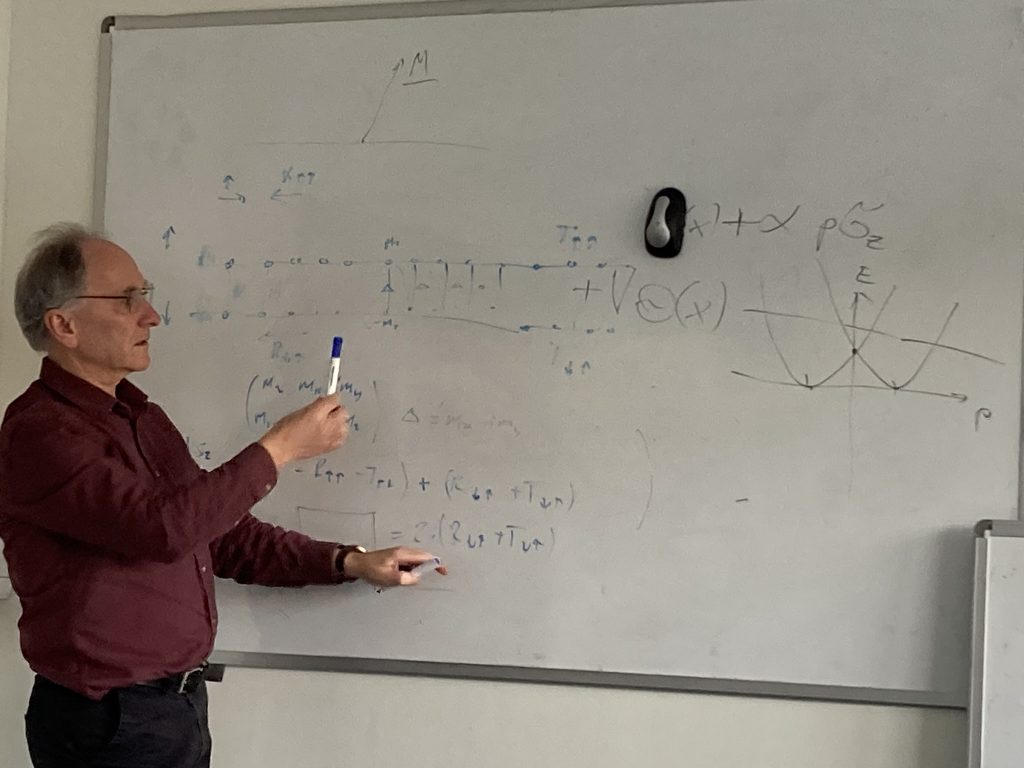
Day 2 – November 20, 2024
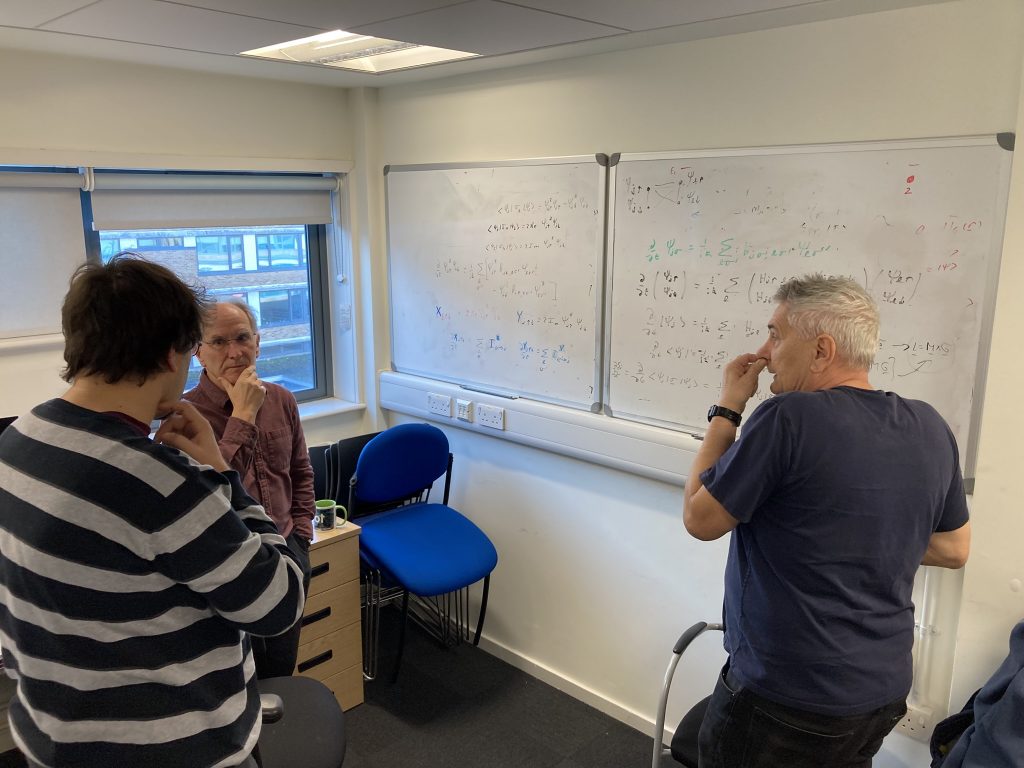
On the second day, the discussions continued with a deeper dive into Green’s function techniques and their application to scattering problems. The team explored the definition and evaluation of the torque operator, a critical aspect of spin transport calculations. There was a particular focus on understanding the significance of the bond current in the context of non-equilibrium Green’s functions. The team discussed various approaches to quantify the torque operator and how to integrate this into their existing models. The exchange of ideas provided valuable insights, helping to clarify key points of the calculation process and deepening the understanding of the theoretical underpinnings of spin torque.
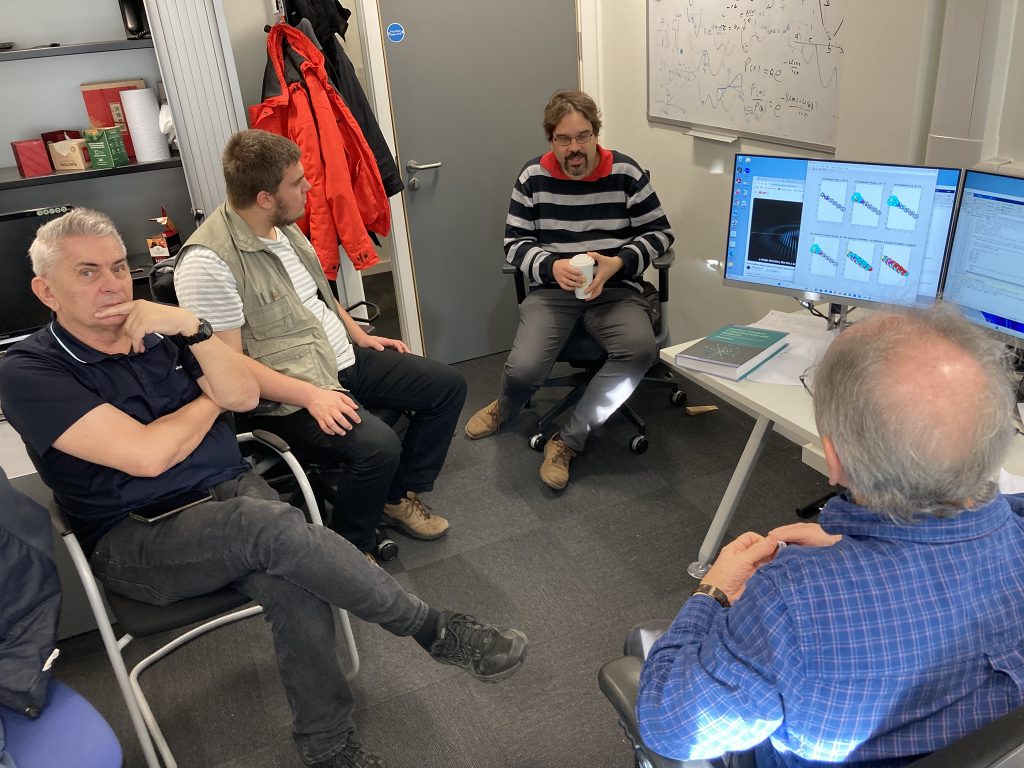
Day 3 – November 21, 2024
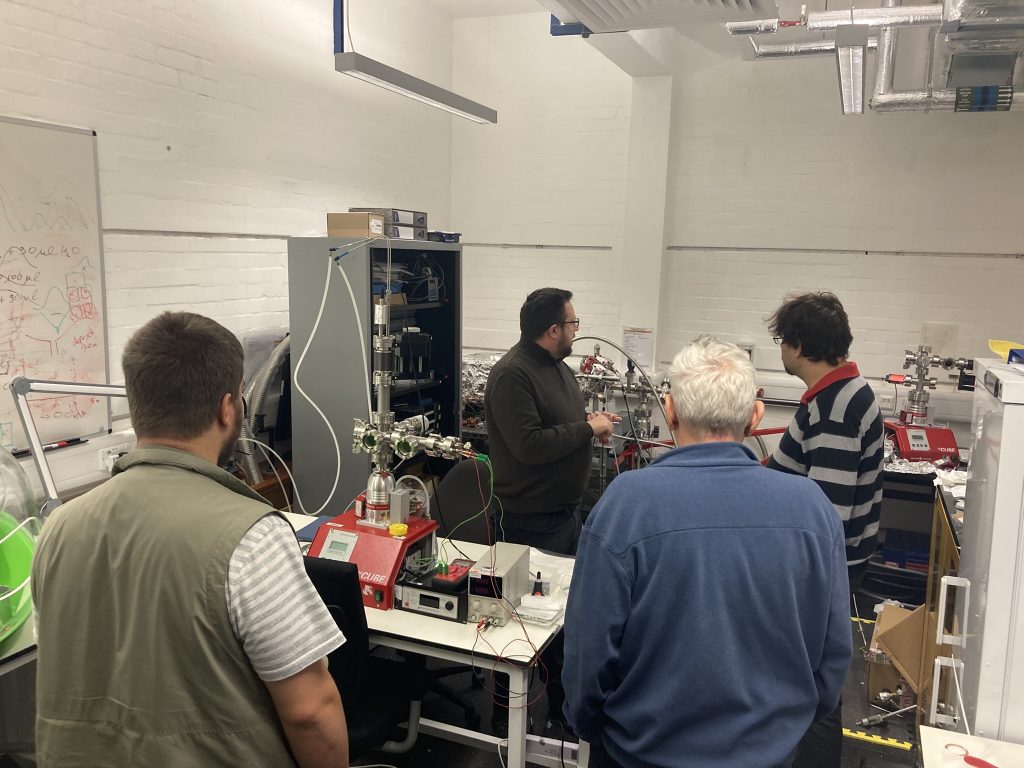
The third day included a special opportunity for the team to learn about Lancaster University’s laboratory facilities. Samuel Jarvis, a senior lecturer and expert in X-ray Photoelectron Spectroscopy (XPS), gave the team a tour of the lab. Sam showed interest in the TRILMAX materials and expressed enthusiasm about potential collaboration in the future. This visit allowed the team to explore how their computational work might be complemented by experimental investigations, especially regarding material characterization. The possibility of future collaboration with Sam’s group added a new dimension to the ongoing discussions about material properties and spin torque behavior.
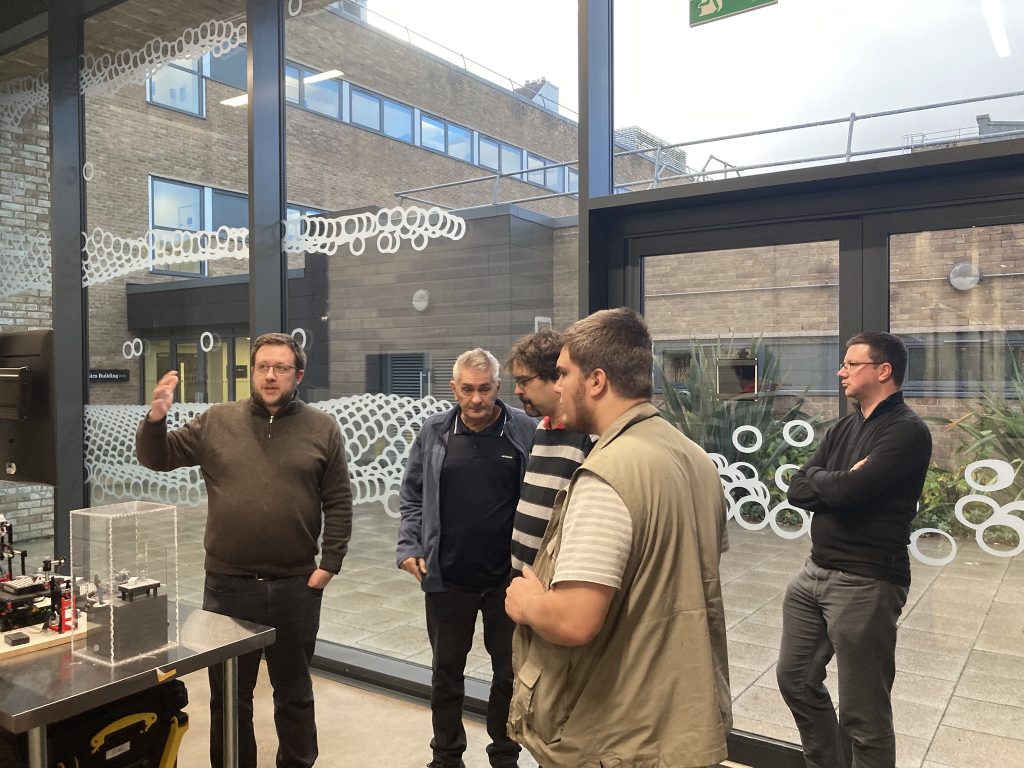
Day 4 – November 22, 2024
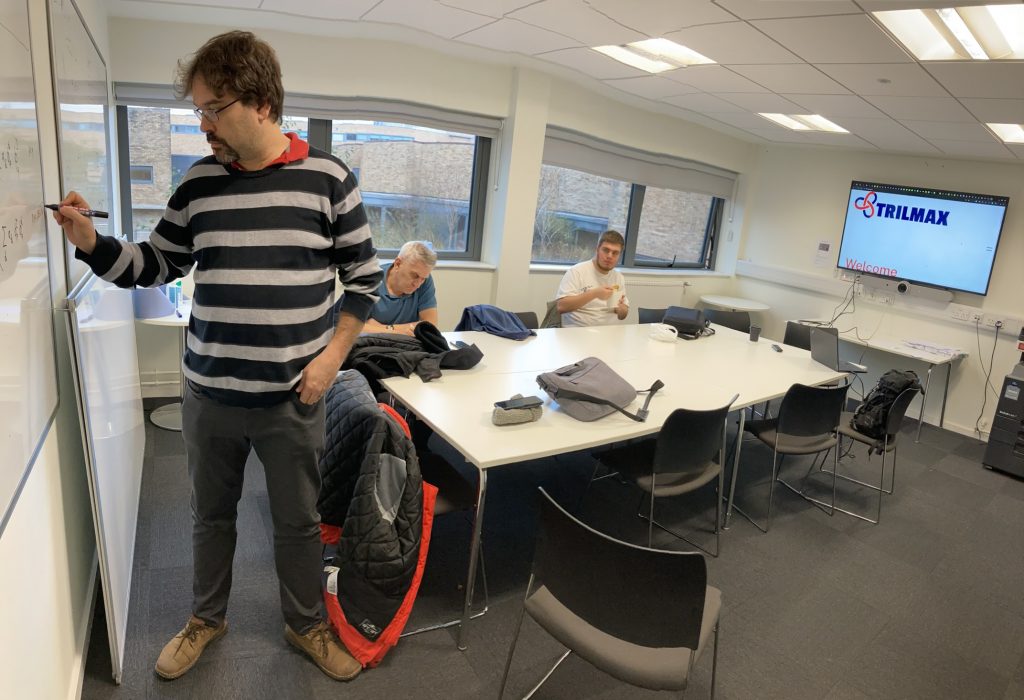
On the fourth day, the team focused on refining their computational models and addressing issues with the code. A significant portion of the day was dedicated to debugging and troubleshooting, particularly in relation to the torque operator’s evaluation on a single magnetic scatterer. The team applied tight-binding and non-equilibrium Green’s function techniques to refine their approach and resolve computational challenges. Progress was made in understanding how to better evaluate the torque in the context of 2D systems, with each team member contributing insights to improve the overall code. By the end of the day, the team had made tangible progress in addressing some of the persistent challenges.
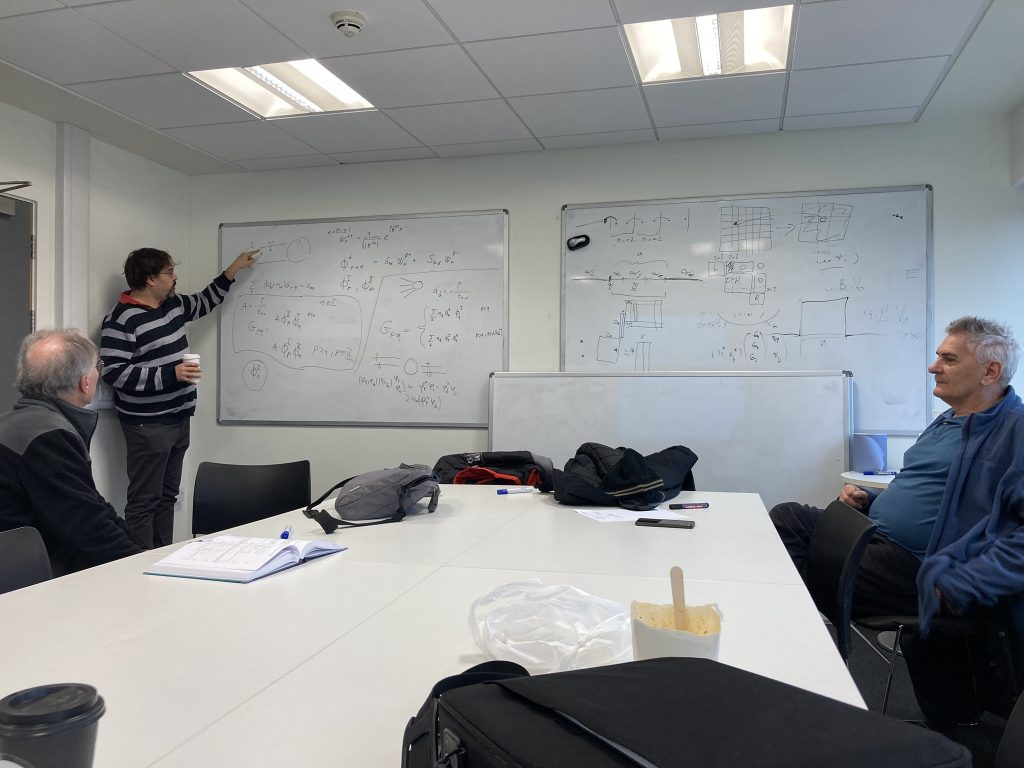
Day 5 – November 23, 2024
The visit was concluded with a final round of discussions, summarizing the progress made and the next steps for the project. The team expressed their gratitude to Prof. Lambert and the Lancaster team for their hospitality and fruitful discussions. The collaboration yielded concrete ideas for advancing the spin torque research, and the team left with a clear plan for the next phase of their work. The visit strengthened the ties between the TRILMAX consortium and Lancaster University, laying the groundwork for future collaborative efforts.
This visit has been a crucial step in advancing the TRILMAX consortium’s research into spin torque effects in 2D systems, and we look forward to continued collaboration with the Lancaster team in the future.

